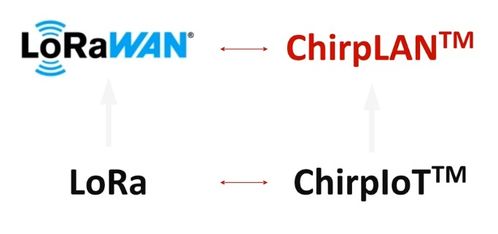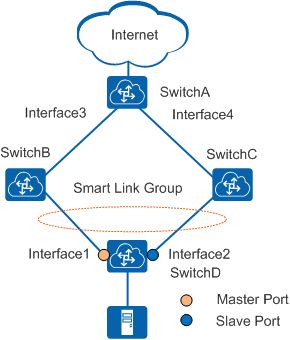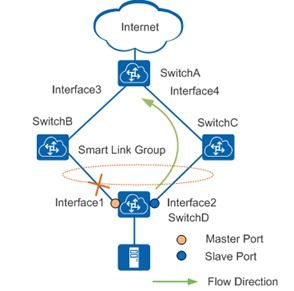Smart Link: A Comprehensive Guide
Understanding the intricacies of network technologies is crucial for anyone involved in IT infrastructure. One such technology that has gained significant attention is Smart Link. This article delves into the details of Smart Link, exploring its purpose, benefits, and implementation in various network environments.
What is Smart Link?

Smart Link, also known as backup link, is a network technology designed to enhance the reliability and efficiency of data transmission. It consists of two interfaces, where one interface acts as a backup for the other. This technology is commonly used in dual涓婅缁勭綉 scenarios, providing a robust backup mechanism and rapid switching capabilities.
How Does Smart Link Work?

Smart Link operates by utilizing two interfaces, one serving as the primary (Master) and the other as the secondary (Slave). The Master interface carries the data traffic, while the Slave interface remains in a standby state. In the event of a failure in the Master interface, the Smart Link automatically switches the data traffic to the Slave interface, ensuring uninterrupted service.
Here’s a breakdown of the key components involved in Smart Link:
| Component | Description |
|---|---|
| Master Interface | The primary interface that carries the data traffic under normal conditions. |
| Slave Interface | The secondary interface that acts as a backup and takes over data traffic in case of a Master interface failure. |
| Protection VLAN | The VLAN that allows traffic to be forwarded between the Master and Slave interfaces. |
| Control VLAN | The VLAN used for transmitting FLUSH messages, which notify other devices of interface status changes. |
| FLUSH Messages | Messages transmitted through the Control VLAN to inform other devices of interface status changes and trigger the necessary actions. |
Benefits of Smart Link

Implementing Smart Link in your network infrastructure offers several advantages:
- Increased Reliability: By providing a backup link, Smart Link ensures uninterrupted data transmission even in the event of a primary interface failure.
- Reduced Downtime: The rapid switching mechanism of Smart Link minimizes downtime and ensures minimal impact on business operations.
- Improved Network Performance: By avoiding the need for STP (Spanning Tree Protocol), Smart Link enhances network performance and reduces the chances of network congestion.
- Easy Configuration: Smart Link is relatively easy to configure and manage, making it suitable for various network environments.
Use Cases of Smart Link
Smart Link can be implemented in various network environments, including:
- Data Centers: Smart Link ensures high availability and reliability in data center environments, where uninterrupted data transmission is critical.
- Enterprise Networks: Smart Link can be used to enhance the reliability of enterprise networks, ensuring seamless connectivity for business operations.
- Service Provider Networks: Service providers can leverage Smart Link to offer reliable and high-performance network services to their customers.
Conclusion
Smart Link is a powerful network technology that enhances the reliability and efficiency of data transmission. By providing a robust backup mechanism and rapid switching capabilities, Smart Link ensures uninterrupted service and improved network performance. Whether you’re managing a data center, enterprise network, or service provider network, incorporating Smart Link into your infrastructure can significantly enhance its reliability and efficiency.


















